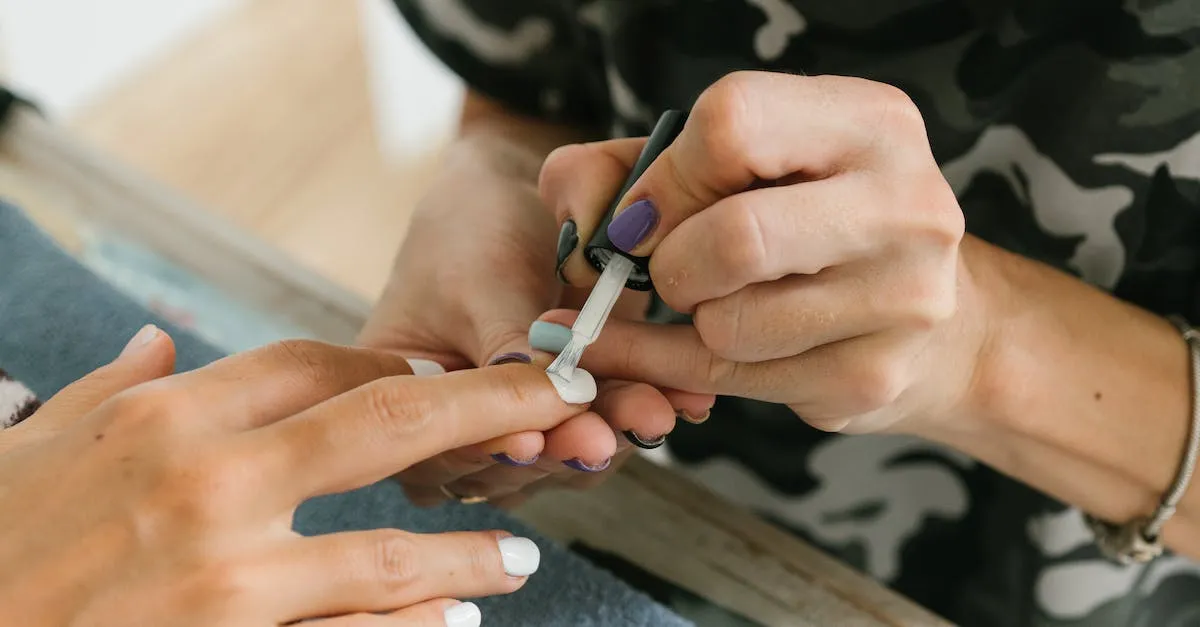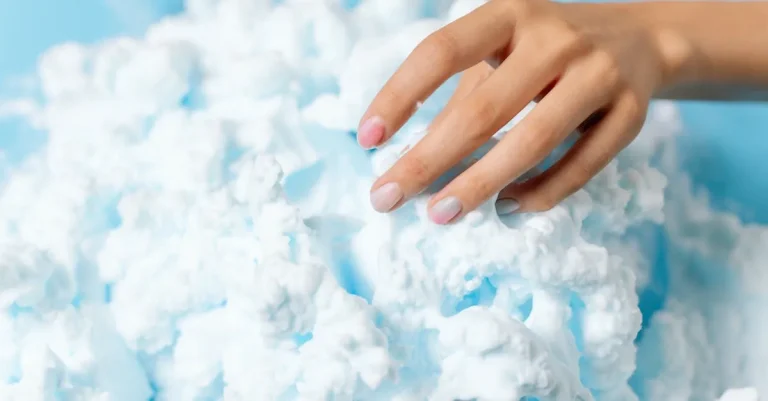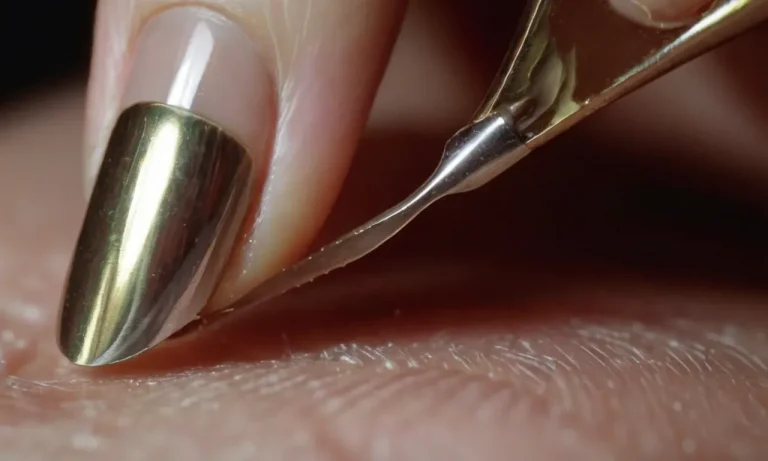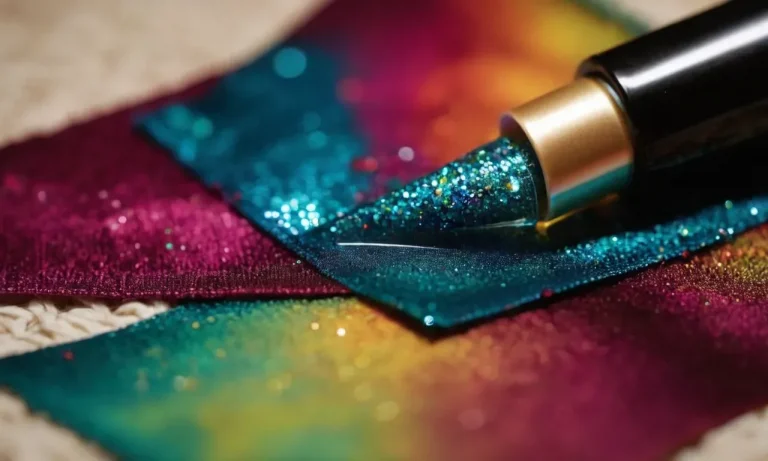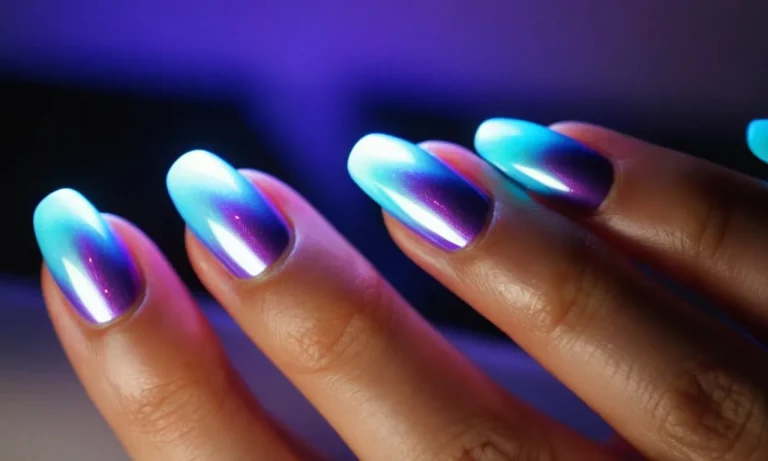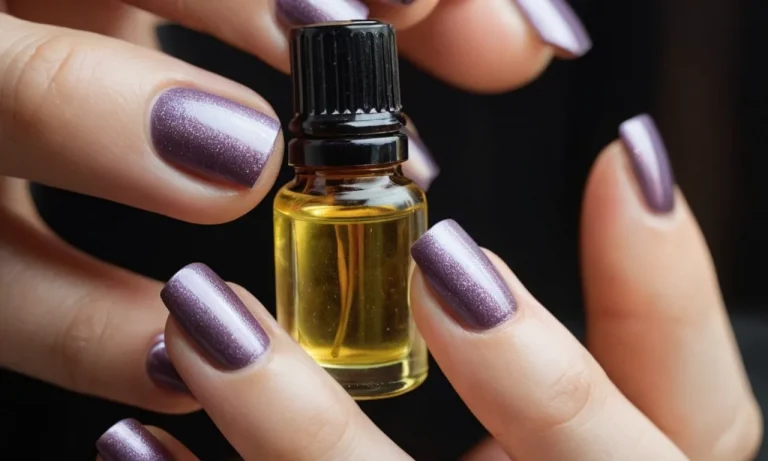How To Repair A Damaged Nail Bed
If you’ve ever experienced a painful nail bed injury, you know how disruptive it can be to your daily activities. A damaged nail bed not only causes discomfort but can also leave your nail looking unsightly.
If you’re short on time, here’s a quick answer to your question: To repair a damaged nail bed, gently clean and disinfect the area, apply antibiotic ointment, cover with a bandage, and avoid further trauma while the nail bed heals. Keep the area moisturized and allow the nail time to grow out.
In this comprehensive guide, we will cover everything you need to know about repairing a damaged nail bed, from first aid tips to long-term nail bed recovery.
What Causes Nail Bed Damage
Physical trauma
The nail bed, which is the skin underneath the nail plate, is very vulnerable to damage from physical trauma. Common causes of physical trauma leading to nail bed injury include:
- Closing doors on fingers
- Dropping heavy objects on nails
- Jamming nails during sports or accidents
- Ill-fitting shoes rubbing repeatedly against toenails
These types of blunt force trauma can crush or tear the nail bed, separating the nail plate from the nail matrix underneath. This can lead to bruising, cracking, splintering, or even complete detachment of the nail plate.
Severe nail bed lacerations may require stitches and leave lasting ridges, grooves, or fragility in the regrown nail.
Fungal infections
Fungal infections like onychomycosis can damage the nail bed while spreading under and lifting up the nail plate. The leading causes are the dermatophytes Trichophyton rubrum and Trichophyton mentagrophytes, along with some nondermatophyte molds and yeasts.
As the fungus proliferates, it digests the keratin protein of the nail bed and plate. This can progressively thin, distort, discolor, and detach the nail from the underlying nail bed. Advanced cases also damage the nail matrix, inhibiting nail regrowth.
Other resulting issues include nail bed inflammation, pain, and secondary bacterial infections.
Skin conditions
Certain inflammatory skin conditions can also scar and undermine the nail bed over time. The most common culprits are:
- Psoriasis
- Lichen planus
- Atopic dermatitis/eczema
The inflamed, scaly skin lesions from these conditions occur on the nail folds and underneath the nail plate. As the inflammation recurs and damages the nail bed, it can lead to trachyonychia (ridged nails), onycholysis (nail plate separation), and onychomadesis (nail plate shedding).
Systemic medical conditions like anemia, thyroid disease, and Vitamin B12 deficiency can also affect nail bed integrity and lead to features like koilonychia (spoon-shaped nails) or Beau’s lines (transverse grooves).
First Aid for Damaged Nail Beds
Stop the bleeding
If your nail bed is bleeding after an injury, it’s important to stop the bleeding first. Apply firm, direct pressure to the area with a clean cloth, tissue or piece of gauze for at least 10-15 minutes. This will help the blood clot and close the wound.
You can also use a styptic pencil or cauterizing powder, available at most drugstores, to help stop minor bleeding.
Clean the wound
Gently clean the injured nail and surrounding area with mild soap and warm water to remove dirt and debris. Avoid using hydrogen peroxide or alcohol, as these can damage the nail bed tissue. Be very gentle when cleaning the wounded area.
Apply antibiotic ointment
After cleaning, apply an antibiotic ointment like Bacitracin or Neosporin to the nail bed injury using a cotton swab. This helps prevent infection and creates a protective barrier. Reapply the ointment 1-2 times per day after cleaning the area.
Cover with a bandage
Cover the damaged nail bed lightly with a sterile bandage or adhesive bandage. Wrap some gauze around the finger to protect the nail bed from further trauma. The bandage should be snug but not tight. Leave on for at least 24 hours, changing every 1-2 days.
Letting air get to the wound also helps healing.
See your doctor if the wound is large, won’t stop bleeding, or shows signs of infection like redness, swelling, oozing or fever. Treating nail bed injuries properly reduces the odds of developing painful complications.
Sources:
- WebMD on stopping bleeding from cuts
- Cleveland Clinic on nail bed injury treatment
Caring for the Nail During Recovery
Keep the area moisturized
Keeping the injured nail bed area moisturized is crucial during the healing process. Using a gentle moisturizer like petroleum jelly or coconut oil helps prevent cracking and discomfort. Apply a thin layer 2-3 times per day. Moisturizing supports healthy new nail growth and prevents infection.
Avoid trauma and irritation
Preventing further trauma or irritation lets the damaged nail bed mend properly. Wear gloves during household chores involving chemicals and water exposure. Use a bandage or specialized finger cot to protect the area from bumps. Avoid nail care procedures like manicures until fully healed.
Reducing pressure and friction encourages proper realignment of the nail plate.
Allow time for the nail to grow out
Damaged nail beds require ample time to regenerate healthy nail tissue. Most injuries take 3-6 months to regrow entirely. Trimming or removing the nail too soon risks reinjury. Monitor nail growth, allowing at least 2 millimeters of new nail to form before gentle filing or clipping.
Letting the nail grow out avoids repeated harm so the matrix can rebuild. With careful protection and patience, the nail will return to normal.
Statistics from the American Academy of Dermatology show up to 10% of nail bed injuries result from acute trauma. Home improvement accidents account for many cases. Using power tools improperly raises the risks exponentially.
Always wear safety gear during DIY projects and use specialized thimbles if available.
For more nail injury prevention tips, visit the American Academy of Dermatology or VeryWell Health.
When to See a Doctor
Persistent pain or throbbing
If you have ongoing pain or throbbing in your nail or fingertip that does not get better with self-care, it’s important to see your doctor. Persistent pain can be a sign of a more serious injury or infection that requires medical treatment.
Don’t try to just “tough it out” – seeking care can help prevent further damage and complications.
Signs of infection
Signs of an infection include redness, swelling, increased pain, warmth around the nail, green or yellow drainage, streaks going up your finger, and foul odor. Infections require prescription antibiotic treatment and can quickly get worse, so it’s essential to see a doctor right away if you notice any infection signs.
No improvement after several weeks
If your nail bed injury isn’t showing signs of improvement after 2-3 weeks of self-care and home treatment, it’s a good idea to see your doctor. They can examine your nail bed, rule out any complications, and determine if you need additional treatment to encourage healing.
The nail falls off completely
If the entire nail falls off due to trauma, see your doctor right away. They can properly clean and bandage the sensitive nail bed to protect it while the nail regrows. Proper wound care can prevent infection and encourage healthy nail regrowth.
Seeing a doctor promptly at the first signs of persistent pain, infection, or lack of improvement can help prevent serious complications and long-term nail damage. Don’t try to “wait it out” – getting timely medical care leads to the best outcome when you injure your nail bed.
Long-Term Nail Bed Recovery Tips
Massage the nail bed area
Gently massaging the nail bed and cuticle area can improve blood circulation and help the nail grow back healthier. After soaking your nails, apply a nourishing cuticle oil or moisturizer. Use your fingertips to gently massage the skin around the nail, stroking from the base of the nail up to the tip.
Do this for 2-3 minutes per nail, 1-2 times per day. Increased blood flow will deliver nutrients to help repair damage and spur new nail growth.
Use a nail strengthening treatment
Look for nail hardeners or conditioners containing nourishing ingredients like calcium, vitamins, and proteins. These can help fortify weak, peeling, or cracked nails. Apply it on clean nails and let it soak in. Use it daily while your nail is growing out.
This helps the new nail grow in thicker and less prone to splitting or peeling. Some good options are Essie Treat Love & Color Strengthener or OPI Nail Envy Nail Strengthener.
Consider nail restoration services
For severely damaged nails, professional nail restoration services may help. Acrylics or gel nail overlays can be applied to shield the nail while it recovers. These provide an artificial nail surface while new healthy nail grows in underneath. This protects the fragile nail bed from further injury.
Professionals can also use nail pigmentation services to cosmetically mask nail bed discoloration or irregularities in texture with natural looking results.
Artificial nail extensions should be removed properly when no longer needed. Improper removal can cause more damage. Seek professional removal rather than attempting to remove them at home. Once the nail bed is healed, experts recommend giving nails a break from extensions for a few weeks/months to avoid overstressing the nail bed.
Conclusion
Damaging your nail bed can be painful and distressing. With proper first aid and ongoing care, your nail should be able to fully recover over time as the nail grows out. Avoid further trauma to the area while healing.
See a doctor if you have any concerns about persistent pain, infection, or lack of improvement. With patience and care, your nail bed can regenerate and your nail can look beautiful again.

